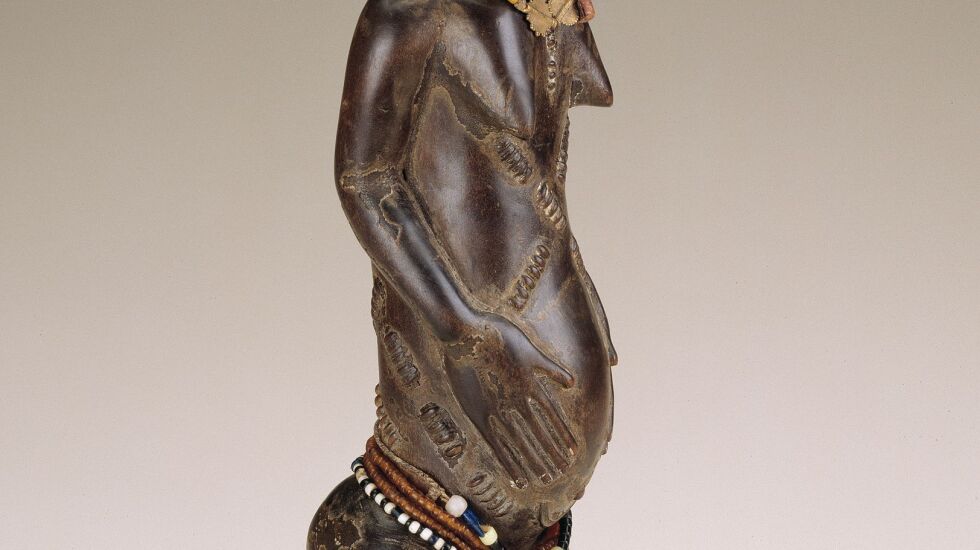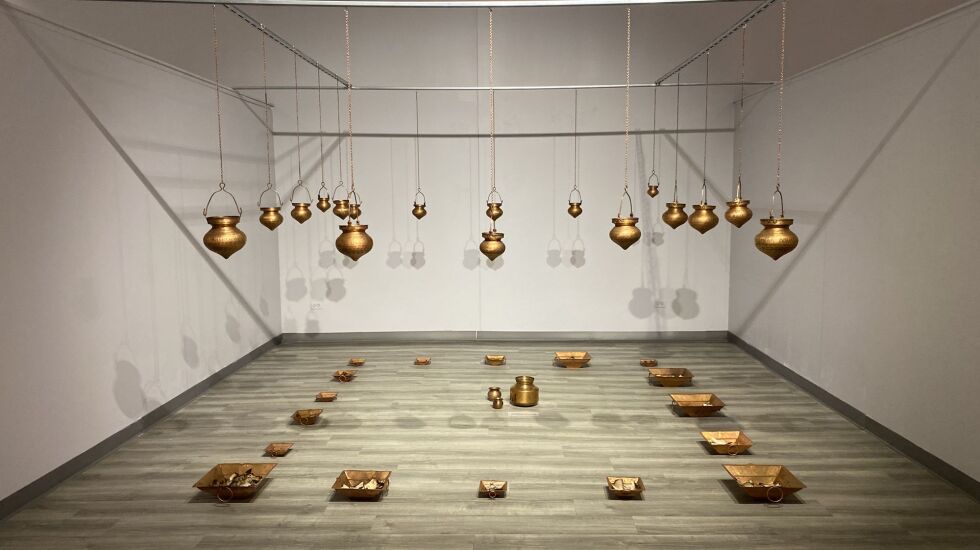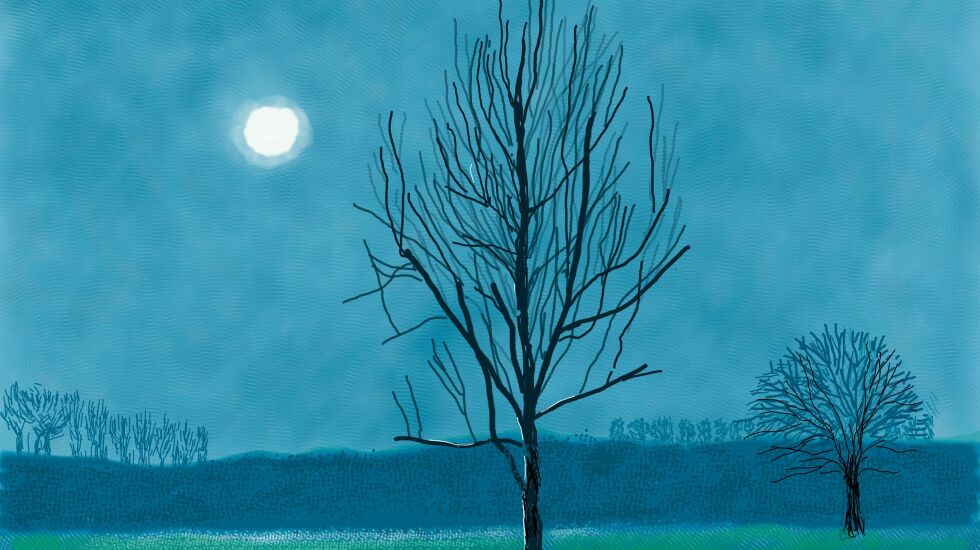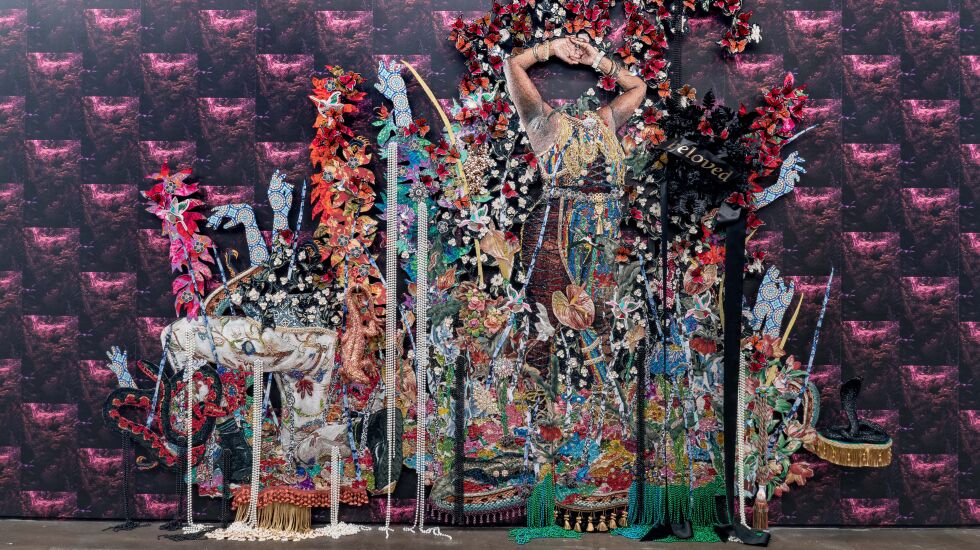
When people think of the Art Institute of Chicago, African art is likely not the first thing that comes to mind, according to one museum curator.
“That’s one of our big challenges or initiatives or ambitions — to make it better-known,” said Constantine Petridis, the museum’s chair and curator of Arts of Africa. “It’s always been a little bit in the shadow of so many of our other great collections.”

The department’s profile should get a big boost Nov. 20 with the opening of a large-scale show in Regenstein Hall, the museum’s main special-exhibition gallery, titled, “The Language of Beauty in African Art.”
With more than 250 sculptures from cultures across the continent, it is the largest show to date to explore the aesthetic appreciation of these objects through the eyes of their African makers and users and to make clear that their appearance is intimately tied to their function.
“This is an essential aspect of the art,” Petridis said. “It’s not an afterthought. It’s not a side note. It’s very often intricately intertwined or crucially related to the purpose and function of these arts. Objects look good so they are successful, that they do what they are supposed to do.”
The show will include loans from an assortment of public and private collections as well as selections from the Art Institute’s African collection, which dates to 1957. Petridis describes the holding as modest in size but comparable to other museums of the Art Institute’s size. “It’s better than people might think it is,” he said.
The show, which traveled to the Kimbell Art Museum in Fort Worth, Texas, earlier this year, will remain on view through Feb. 27, 2023, at the Art Institute, 111 S. Michigan (artic.edu).
Here is a selection of 10 more fall exhibitions worth checking out:
Through Sept. 25, “Flourish: The Garden at 50,” Chicago Botanic Garden, 1000 Lake Cook Road, Glencoe (chicagobotanic.org). Just a few weeks remain to see this indoor and outdoor art exhibition, which celebrates the Botanic Garden’s 50th anniversary. The organization commissioned 10 nature-inspired installations by local, national and international artists. Among them are “The Rookery,” a fantastic, castle-like structure constructed of bent-willow saplings by North Carolina artist Patrick Dougherty, and “Herbarium,” a hanging installation of dried flowers in the visitor center by Rebecca Louise Law of Cambridge, England.

Through Dec. 10, “Unbearable Memories, Unspeakable Histories,” South Asia Institute, 1925 S. Michigan (saichicago.org). Some people have probably still not heard of the South Asia Institute, which opened in 2019 and has become a significant art and cultural destination in the South Loop. As part of its continuing exhibition series, this show features works from Pritika Chowdhry’s 15-year-old “Partition Anti-Memorial Project,” which examines the trauma and continuing after-effects of the 1947 partition of British India into the independent countries of India and Pakistan.

Through Jan. 9, 2023, “David Hockney: The Arrival of Spring, Normandy, 2020,” Art Institute of Chicago, 111 S. Michigan (artic.edu). Talk about an artist who needs no introduction. Born in England but perhaps most associated with California, where he has lived off and on since 1964, Hockney emerged during the Pop Art movement of the 1960s and has been active since, creating his distinctive brand of bright, stylized landscapes and portraits. This show features more than 100 works that he created in 2020 using an iPad app specifically developed to meet his artistic requirements.
Through Feb. 19, 2023, “Capturing Louis Sullivan: What Richard Nickel Saw,” Driehaus Museum, 40 E. Erie (driehausmuseum.org). As one of the foundational figures in Chicago’s modern architectural scene, Louis Sullivan needs no introduction. This show features 40 photos that Nickel, a Polish-American architectural photographer and preservationist, took of Adler & Sullivan’s buildings from the 1880s and early ‘90s. These images date to the 1960s and ‘70s, when many of these architectural treasures were being demolished, and they provide invaluable documentation of these lost structures.

Sept. 17-Jan. 16, 2023, “Bridget Riley Drawings: From the Artist’s Studio,” Art Institute of Chicago (artic.edu). After working in several previous styles, Riley became part of the 1960s op-art movement with her disorienting, geometric abstractions. The London-born artist later fell largely out of view but came roaring back into favor with a revival sparked in part by a 2000-01 solo show at New York’s Dia Center for the Arts (now Dia Chelsea). This show is billed as the first and most extensive look at her drawings in more than a half-century.
Sept. 20-June, 2023, “Nostalgia for My Island: Painting from the Museo de Arte de Ponce, 1786-1962,” National Museum of Puerto Rican Arts and Culture, 3015 W. Division (nmprac.org). As repairs on Puerto Rico’s Museo de Arte de Ponce continue in the wake of damage from Hurricane Maria five years ago and a subsequent earthquake, the institution is sending highlights of its collection on tour off the island for the first time ever. Spanning nearly two centuries, this exhibition features 21 works by such important Puerto Rican artists as Myrna Báez José Campeche, Francisco Oller and Miguel Pou.

Sept 22-Dec. 4, “Taking Shape: Abstraction from the Arab World, 1950s-1980s,” Block Museum of Art, Northwestern University, 40 Arts Circle Drive, Evanston (blockmuseum.northwestern.edu). Mention abstraction in the United States, and visions of Richard Diebenkorn, Jackson Pollock and Clyfford Still immediately come to mind. But this artistic approach was hardly limited to this country. This touring show, organized by the Grey Art Gallery at New York University, offers at look at abstraction in an unexpected part of the world and examines what organizers describe as its larger cultural, intellectual and spiritual connotations.
Sept. 22-Jan. 8, 2023, “Monochromatic Multitudes,” Smart Museum of Art, University of Chicago, 5550 S. Greenwood (smartmuseum.uchicago.edu). Works of art made with a single color were an essential part of mid-20th-century modernism. Think Ad Reinhardt or Yves Klein. But this exhibition takes a much broader look geographically, chronologically and culturally at this continuing artistic approach, with more than 100 works, including examples by such artists as Theaster Gates, Carmen Herrera and Yayoi Kusama.

Oct. 1-Dec. 17, “The First Homosexuals: Global Depictions of a New Identity, 1869-1930,” Wrightwood 659, 659 W. Wrightwood (wrightwood659.org). The presence of gays and lesbians is so commonplace today on television and in movies and books that most people probably don’t give it much thought. But that was anything but the case a century or more ago. This ground-breaking show looks at what organizers call the “very first self-consciously queer art,” with 100 paintings, drawings, prints, photographs and film clips dating as far back as 1869, when the word “homosexual” was coined in Europe.
Nov. 19-April 23, 2023, “Forecast Form: Art in the Caribbean Diaspora, 1990s-Today,” Museum of Contemporary Art Chicago, 220 E. Chicago (mcachicago.org). This large-scale exhibition, the first presented at the MCA in both English and Spanish, offers a rethinking of Caribbean art, focusing on 37 artists from the region who work across the Americas and Europe. According to press materials, the show seeks to reveal the Caribbean as a “place not defined by geography, language or ethnicity but by constant exchange, displacement and movement.”








